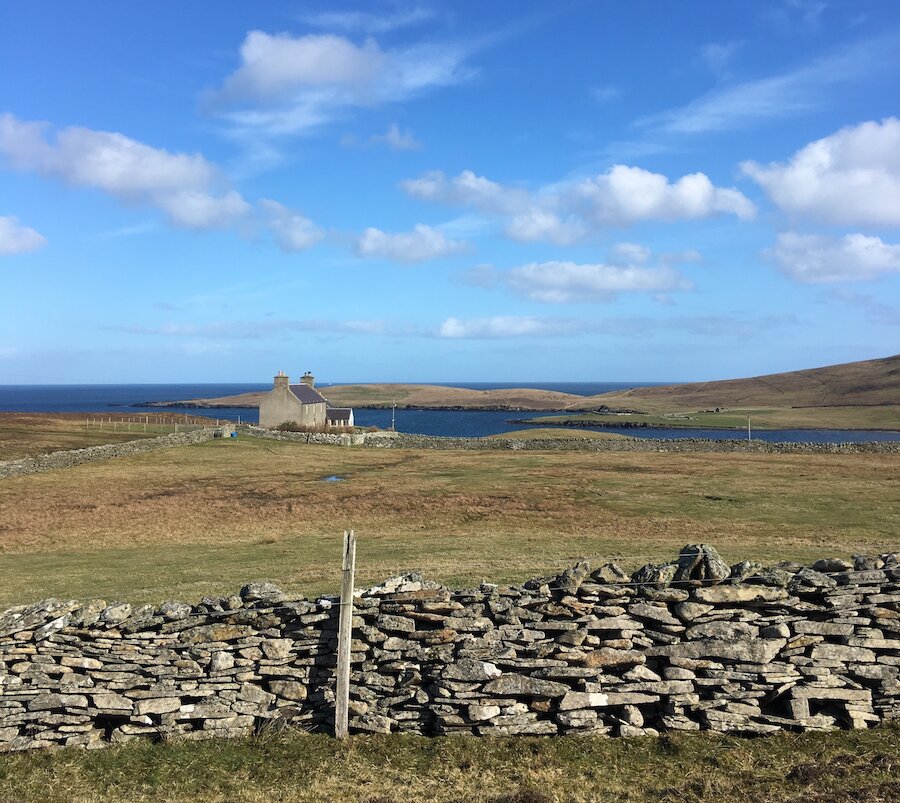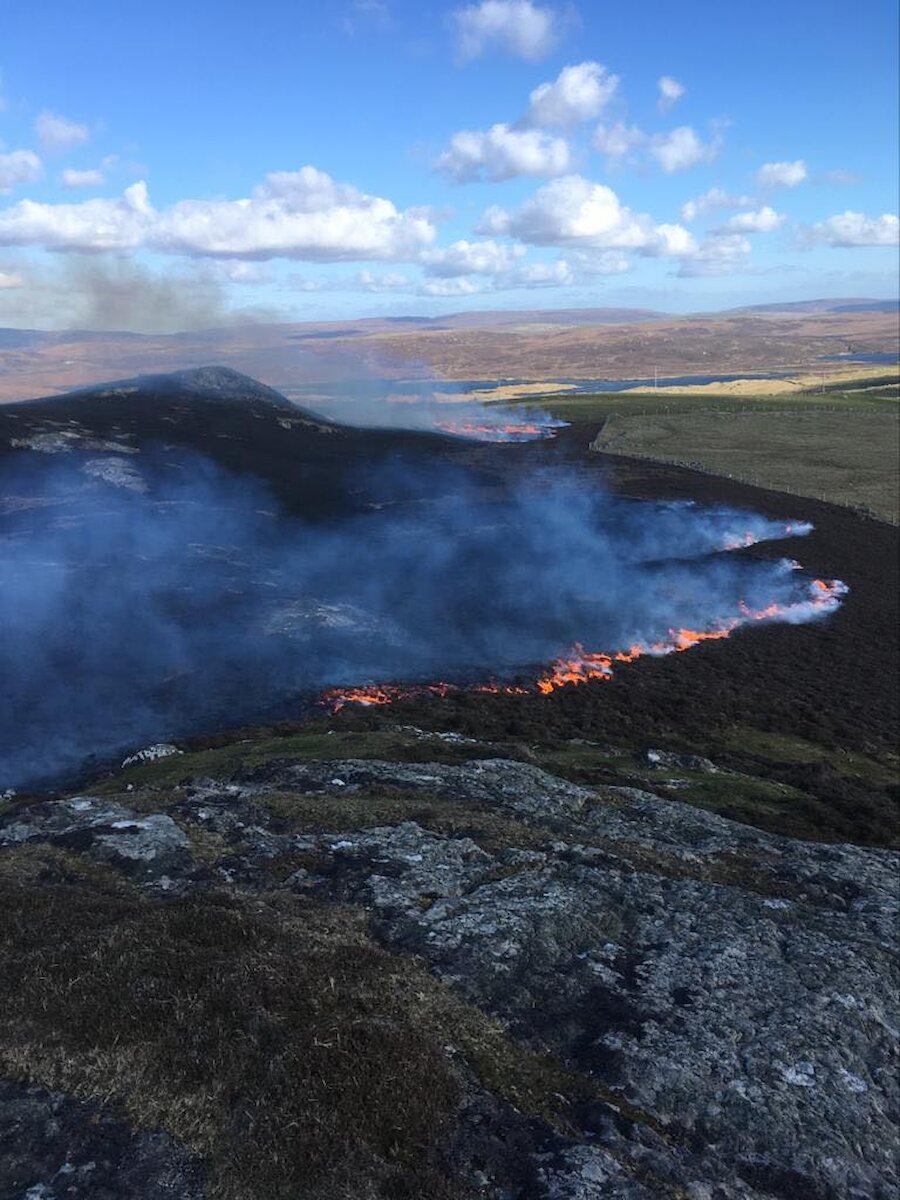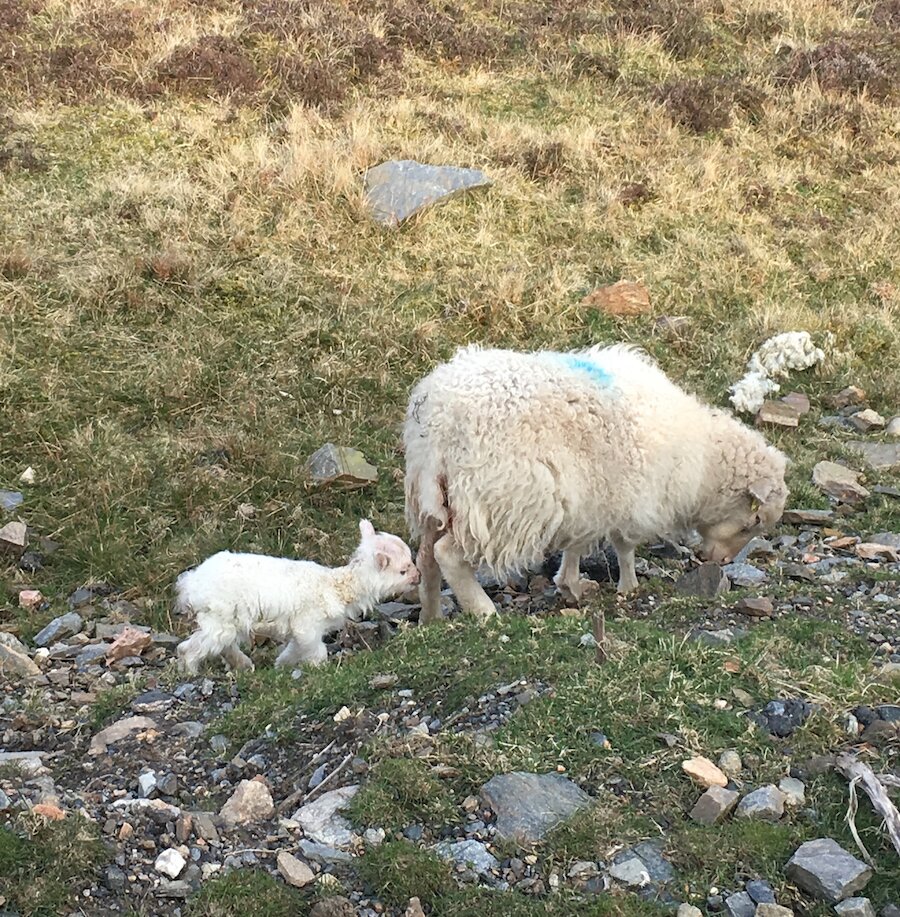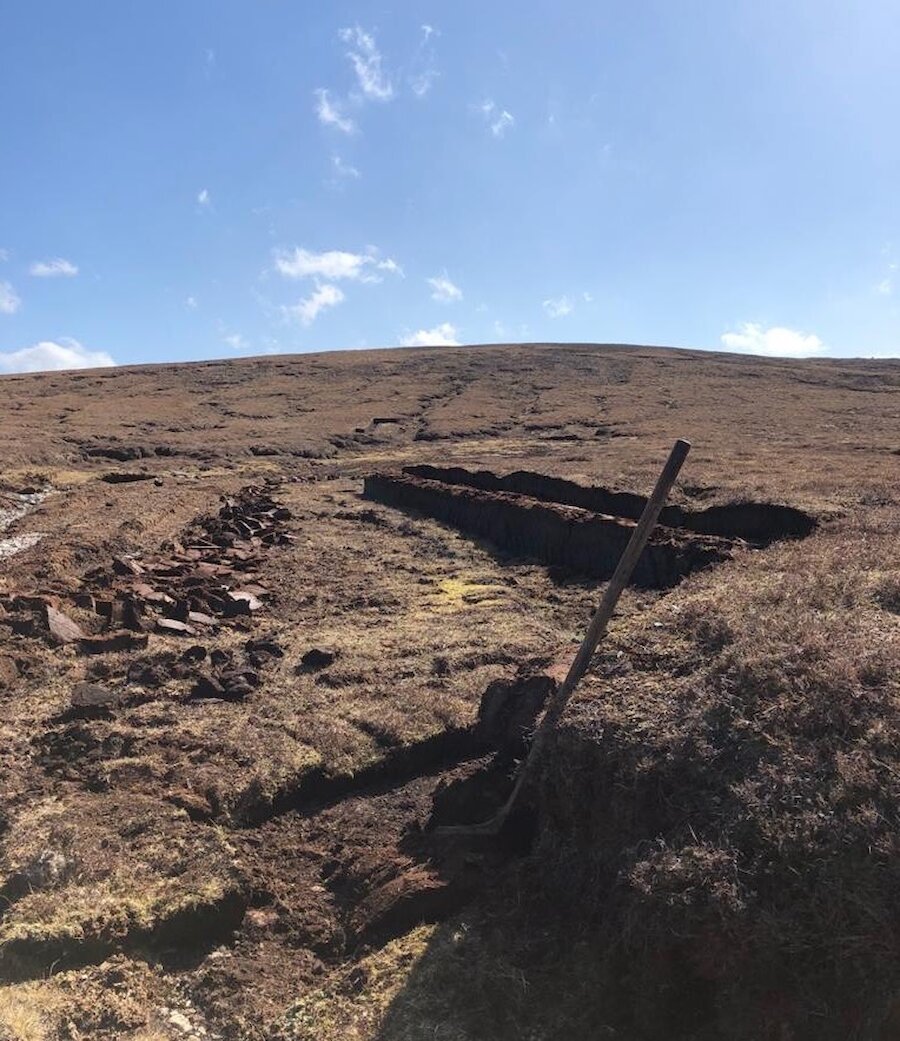All burning of the heather must be completed by 15th April to allow the nesting birds a safe place to breed – and this year saw a complete ban on heathery fires due to the Covid-19 pandemic. As with any burning, there is always an increased risk of uncontrolled fire which could require the attendance of emergency responses.
As well as the burning of the heather, other important voar work would be undertaken from April including, dellin’ [turning over] the ground to make way for crops, repairing any winter damage to stone dykes, and moving animals from the scattald [fields around the house, or infields] to allow for growing crops and grazing the milking cows.
Tatties and oats would be sown in April, and a weather window – such as what we’ve had this week – would have been much hoped for. Crofters were keen to get the oats in the ground before Simmermill Day – 25th April in the old calendar (I wrote about the differences in calendar dates in Shetland in the Yule blog).
Simmermill Day, on 14th April, was the last festival of spring. This date was much anticipated as it marked the beginning of the summer half-year. It was important that the seeds were in the ground at this time, and it was often said that “a day in voar is a week in hairst [autumn]”.
The weather on Simmermill day was observed with a keen eye, as the weather on this day was thought to foretell that of summer. This type of weather-lore was also observed on the Borrowing Days (the last three days of March). The Borrowing Days were said to foretell the weather for May, June and July. These days are still observed here today.
Shetland’s growing season is notoriously short, far shorter than even the north of Scotland, and for this reason, good days in April would reap healthy rewards in the autumn, or hairst. A wet, cold and stormy April would make it difficult for seeds to germinate and the risk of crop failure would be all the more real, and hunger an even graver possibility.




